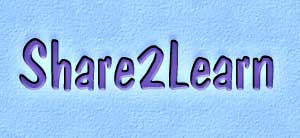About Learning... and Teaching
by Renée Goularte
In my early years as a teacher, I learned a lot from reading John Holt.
This quote sums it up for me:
"Many years ago I began to play the cello. Most people would say that what I am doing is 'learning to play' the cello....In short, I will go on 'learning to play' until I have 'learned to play'and then I will begin to play. Of course, this is nonsense. There are not two processes, but one. We learn to do something by doing it. There is no other way."
~ John HoltThese are my beliefs about teaching and learning:
Children learn by doing.
The best, most long-lasting learning is done through action, by doing, by exploring, by discovering. Teachers cannot pour knowledge into students' brains; students need to interact, question, respond, ponder, make judgements, consider possibilities, and more. All this takes time.Learning is a social activity.
Independence is good, but learning is not an independent act. We all learn by communicating with others, by explaining what we've learned, how we got there, and what we've read about.Children are teachers, too.
Teachers can learn more from the children themselves than we might want to admit. If we watch them closely, strive to understand their processes, we can create a learning environment that meets all students' needs.Teaching the whole child is critical.
Focusing only on reading and arithmetic shortchanges students and prevents them from becoming well-rounded, productive members of society. It's imperative to make time for the fine arts, social and collaborative work, and physical activity; in fact, these are just as basic to a good education as the "academic" skills. Without them, a person remains incomplete and only partly-educated, a spitter-out of information with no ability to use and apply it.Programs are not teachers.
There is no "program" as good as a reflective teacher who plans with the students' needs in mind, who adjusts when adjustment is called for, and who is not afraid to venture outside the box that seems to get smaller every day.Learning is not always "top down."
Students don't always need "a lesson" first. Their questions can be the catylist for curriculum. Sometimes teachers need to get out of the way, give students time, and ask a lot of questions. The teacher's first job is to set up an environment for learning that puts students first, with materials, tools, and books available and handy for students to use as they need them. Within that environment, students can learn not to depend on the teacher for every direction or every right answer.
